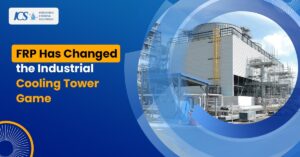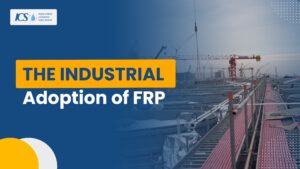FRP Has Changed the Industrial Cooling Tower Game

Every once in awhile, a technological advancement comes along that helps to boost the efficiency of an industry. These technological advancements work together with existing processes and components to bring a new element to an industry, greatly affecting the way the industry standards are set and, in some cases, causing people to question how the industry got by for so long without this amazing new advancement. Here at Industrial Cooling Solutions, Inc., we have been involved in the industrial cooling tower business for quite a while. In that time, we have seen advancements in the industry that have increased efficiency and lowered costs in ways that seemed impossible. In today’s post, we are going to cover the history of Fibre-reinforced plastic (FRP), a material that has been quickly adopted in the cooling tower industry to create fan blades that are more balanced and efficient than any other type of fan blade before them. Continue reading below to learn more.
FRP Technology is Relatively New

The incorporation of FRP technology into industrial processes is less than a century old. As most people know, plastic is a relatively modern invention, with the development of most modern plastics happening in the early 1900s. Plastics came about from the efforts of chemists and scientists who were looking to develop synthetic materials that were able to mimic similar substances found in nature while simultaneously performing better than said substances. The first known product made from FRP was an experimental boat hull developed in the mid-1930s. This hull was initially developed as an experiment looking to study the effectiveness of combining fiberglass fabric with polyester resin. Somewhat surprisingly, the combination of these two materials resulted in an amazingly strong yet light hull, and laid the foundation for the use of FRP technology in a wide range of industries including aerospace, marine, and electrical applications.
Like most new forms of technology, FRP was of particular interest to the defense industry. The US Air Force and Navy quickly began to experiment with FRP composites because of its impressive strength-to-weight ratios and its ability to resist the corrosive effects of salt water. By 1945, just a few short years after the introduction of FRP composites, 7 million pounds of FRP materials were being shipped, with the bulk of the product going to the military. While the military’s early investments into FRP technology cannot be overlooked, it wasn’t long before other industries began to notice the potential benefits of FRP materials.
The Industrial Adoption of FRP

After the military experimented with FRP composites, the public sector caught wind of the many benefits that this new material offered, especially in relation to its ability to resist corrosion. In 1948, the first pipes made from FRP were introduced and, quite quickly, the oil industry saw just how amazing this new technology was. FRP composites proved to be a viable alternative to traditional corrosive resistant materials, even in the high-pressure, large diameter situations of chemical processing. In addition to its vastly superior corrosion resistance, FRP pipe offered durability and strength that helped to eliminate the need for interior linings, exterior coatings, and cathodic protection on pipes used to transport corrosive substances. These benefits helped industries save money and, more importantly, incorporate a superior material into their processes.
Why is FRP Important to the Cooling Tower Industry?

Industrial cooling towers, historically, have had issues with corrosion. Not only do a large amount of cooling towers utilize water, a natural corrosive force in nature, to mitigate heat, many cooling towers also have to deal with chemical elements that are presented into the system due to industrial processes. Before the introduction of FRP materials, fan blades were almost exclusively made from aluminum due to its relatively light weight and durability. Unfortunately, aluminum is still a metal, meaning that over time, it will succumb to the effects of corrosion if exposed on a regular basis. Fan blades made from FRP composites, however, are able to resist the corrosive environment of the interior of a cooling tower, delivering unparalleled efficiency and durability. In addition to the corrosion resistance offered by these fan blades, FRP can be molded into nearly any shape. This means that cooling tower fan blades can be molded into the most optimal shape possible to push the large amounts of air that are needed for a cooling tower to run efficiently and, because the fan blades are molded into a single structure, the chance of the fan coming apart are reduced greatly.
Learn more about the FRP fan blade options that we have available here at Industrial Cooling Solutions Inc. We have been leaders in the industrial cooling tower sector for years and we are dedicated to providing the best materials possible in order to make sure that all of our clients are able to make sure that their cooling towers are performing as efficiently as possible.

